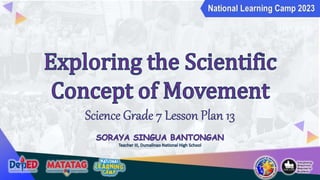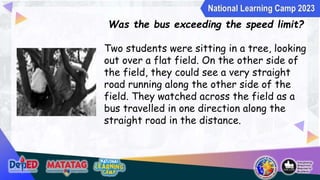This document provides a lesson on describing the movement of objects scientifically. It introduces key terms like distance, speed, direction, and traveling. It then presents a word problem about measuring the speed of a bus to see if it exceeded the speed limit. Students are asked questions to help them apply the concepts of distance, time, rate, and using calculations to determine speed in kilometers per hour. The document aims to teach students how to quantitatively analyze and describe the movement of objects.




























